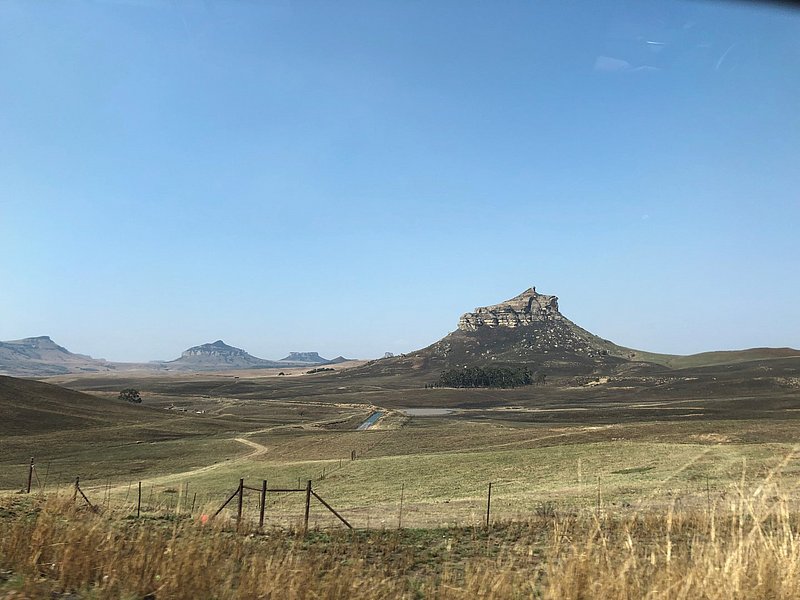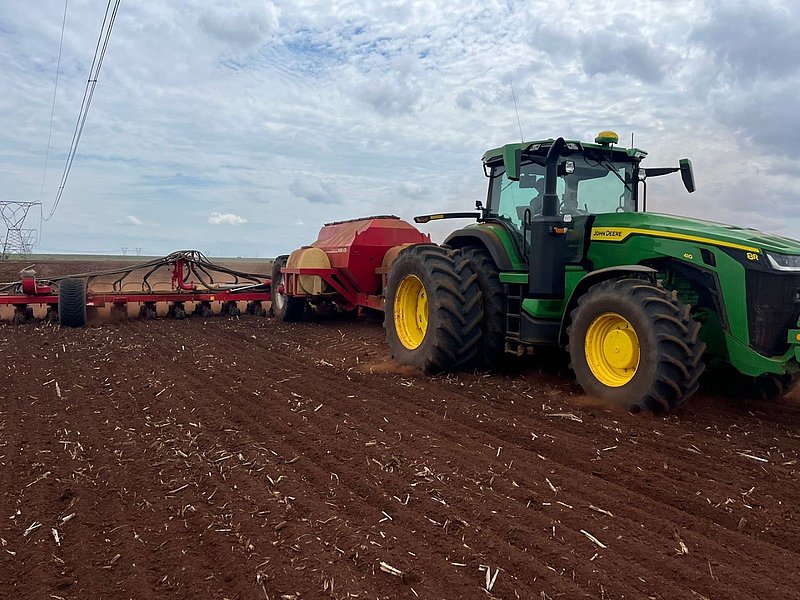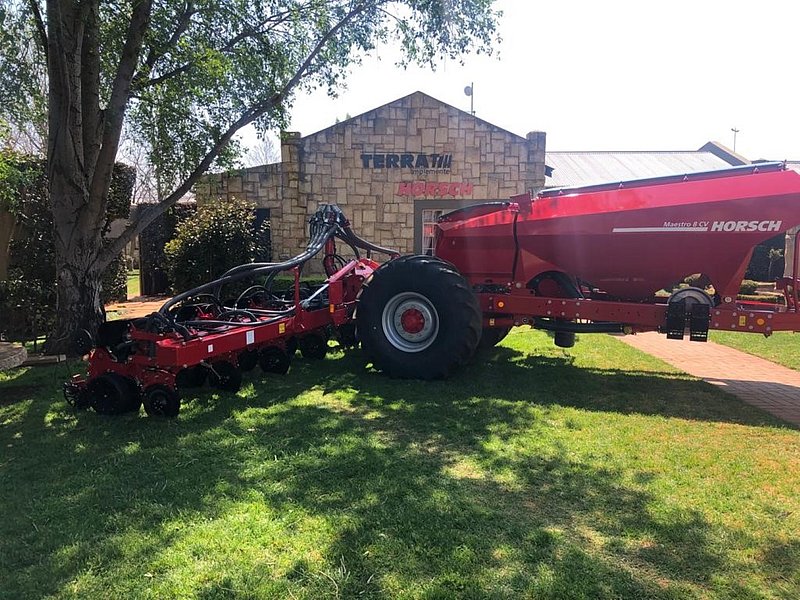Impressions from South Africa
HORSCH’s statement is clear: The focus of the activities is on every single customer with his individual requirements. This, of course, also is true for far away markets. Micha Trotzky talks about the activities in South Africa.

Micha Trotzky is the responsible HORSCH Territory Manager for some countries in southern Europe, Africa and as of late also for Oceania, i.e. Australia and New Zealand. This job cannot be carried out from an office at Schwandorf. It is important to be present on site to get to know the conditions and the customers. This year alone, Micha Trotzky made four trips to South Africa. Among others he was accompanied by Phillip Horsch – who knows South Africa from previous trips – as well as by Jonas Leeb, Theodor Leeb’s son.
“We have been doing business in South Africa for already about ten years”, Micha Trotzky tells us. “Our partner resp. importer is TERRATILL which was founded by Sarel Haasbroek, a South African agricultural entrepreneur. Their headquarters is in the region of Johannesburg where also most of the HORSCH customers are located. With about 3 million hectares of arable land, it is South Africa’s key growing area for maize and soya. The region is very spacious. Accordingly, the soils are varying. The conditions range from sandy via loamy to stony. What they have in common is that they are prone to compaction. Therefore, farmers usually carry out a deep loosening at 50 to 70 cm to additionally grant the plant roots access to the deeper water layers. The sales area is situated at a height of about 1,500 m NHN. Among the limiting factors figure the precipitations with an annual average of about 500 mm and 700 mm. They are limited to a short rainy season. Because of the La Niña phenomenon there tended to be a little bit more rain in the past years. In addition to maize and soya, farmers in South African also grow sunflowers, peanuts and partly also potatoes and more intensive crops. The latter, however, are irrigated. Yield extremely depends on rainfall and the region. Without irrigation it amounts to only a few tons: for maize approximately about 7 t/ha. One farmer was very proud that he was able to harvest 4 tons of soya. 2 tons are rather more common.
Rain starts falling in October when it is spring in South Africa. Then the arable farming season starts. In autumn/winter (April till October) it mostly is dry.

Varied agriculture
Our customers run farms with about 1,000 hectare of arable land and more. The farmers often base their farms on various branches. Among them livestock breeding, normally cattle, game farms, dairy cattle and pig farming. This is why the landscape is rather colourful. It is common that the harvested fields are grazed by cattle.
With regard to tractor manufacturers the region is a stomping ground for the Who is Who of the sector. The farms I visited work with powerful articulated wheel tractors, caterpillar or articulated caterpillar tractors. The state-of-the-art technology like tractors, seed drills as well as crop care technology and combines are stored under roof, other machines often are left outside. The image of the farms is marked by silo installations and wind plants to pump water and the farms also include the residential houses of the owner family and of the farm manager’s family.
One specific characteristic is that some machines are manufactured by local companies. There even are farms that build part of their machines themselves or have them built specifically according to their specifications.
In South Africa, ploughs quite literally have been put on the scrap heap. I observed that among our customers there actually are three cultivation strategies:
- All-over tillage with subsequent sowing
- „Pre-Planting“ resp. offset StripTill: strip tillage is the basis for sowing. It is carried out in September which is a time when the farmers are not busy. Sowing then is carried out at the beginning of the rainy season with the objective to make a lot of hectares in a relatively short time. Accordingly, the operational speeds amount to 12 to 14 km/h. Fertiliser is applied in both cases: in the first step with phosphor, in the second step with more emphasis on nitrogen.
- Direct seed: However, in this case, it must not be confused with “No-Till”, for there is a tine in front of the seed row that loosens the soil at a depth of 10 to 15 cm. Fertiliser is applied simultaneously. With this method, the farmers work more slowly, but still at an operational speed of about 10 km/h.

The methods the farmers use depend on the soil, their philosophy and their own experiences.
The periodic depth loosening (every year or on a several-year basis) I mentioned above is used in all three strategies.
For all methods
With our product range we are well-prepared for the South African market. For the first method the HORSCH Joker RT and HD with working widths from 6 to 12 m are very popular as well as the Terrano and Tiger MT with 4 to 12 m working width.
The most important machine in this market is our Maestro which we offer with 8 to 24 rows and with row spacings of 76 and 91.5 cm (30 resp. 36 Inch). With the 24-row Maestro as a setup with an electronic recession single grain metering system for a row spacing of 76 cm, we have been the only manufacturer on the market for quite some time und thus, were able to develop a large market share. By the way, in this market we only sell AirVac metering devices as at the beginning of the rainy season conditions often are very wet and the catching roller cannot be used.
For StripTill HORSCH already launched the Evo in the European market. We did not introduce this machine into the South African market. The South African farmers mainly use locally built machines for Pre-Planting resp. StripTill. Sowing is then carried out with the Maestro with high operational speeds.
The third method is a particularly interesting market. And we are well versed in the sector of direct seed with tines. With the Focus we already have been marketing the appropriate machine for years and in South Africa, too, there are quite a few Focus-Maestro combinations. For some years now, we have been testing other machines in South Africa and South America and at the moment we are combining the experiences from these two markets to be able to develop other solutions for this method in addition to the Focus.

One-stop
What the South African customers particularly appreciate with regard to HORSCH is that we sell one-stop high-tech machines: VariableRate and SectionControl, the electronic control of the machine as well as the metering system for seed and fertiliser is all made by HORSCH. HorschConnect, too, is an important sales argument. As well as the MTS system (Main Tank Supply System) where the seed is transported individually and according to the requirements at the row. The main advantage is the faster and easier filling of the machine with seed – especially at the beginning of the rainy season when the windows are narrow – as well as the fast folding and a smooth road transport of machines with a large working width. Thus, the farmer can quickly get from one field to the next if the conditions for sowing allow for it.”
